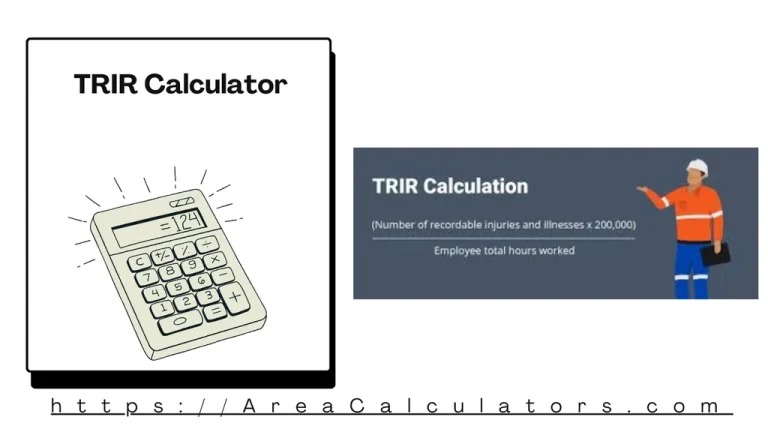Floor Weight Capacity Calculator – Floor Loading, Maximum Floor
Multiply the floor area by the load capacity per unit area. The Floor Weight Capacity Calculator is an essential tool for determining how much weight a floor can safely support.
Multiply the floor area by the load capacity per unit area. The Floor Weight Capacity Calculator is an essential tool for determining how much weight a floor can safely support.
If you’re placing heavy furniture, machinery, or equipment, calculating floor load capacity ensures safety and structural integrity. This tool is widely used for residential, commercial, and industrial spaces.
FC = FA ∗ CPA
| Variable | Description |
|---|---|
| FC | Floor capacity (in pounds or kilograms) |
| FA | Floor area (in square feet or square meters) |
| CPA | Capacity per unit area (in pounds/square foot or kg/m²) |
Example 1: A room measures 10 ft x 12 ft, and the floor’s capacity is 50 lbs/ft². Calculate the maximum weight it can hold.
| Step | Calculation | Result |
|---|---|---|
| Floor area (FA) | 120 ft² | |
| Capacity per unit area | 50 lbs/ft² | |
| Total capacity (FC) | 6,000 lbs |
Example 2: Determine the floor capacity for a 20 m² area with a load capacity of 250 kg/m².
| Step | Calculation | Result |
|---|---|---|
| Floor area (FA) | 20 m² | |
| Capacity per unit area | 250 kg/m² | |
| Total capacity (FC) | 5,000 kg |
The Floor Weight Capacity Calculator is a practical tool. This tool enables you to estimate the maximum weight a floor can safely support. Whether for residential or commercial buildings, this tool helps evaluate a floor’s load-bearing capacity, considering live loads (furniture, people, etc.) and dead loads (structural components like flooring materials). It ensures safety and prevents overloading issues.
Using the calculator is simple. Enter the floor’s dimensions, material type (e.g., wood, steel, or concrete), and load distribution in pounds per square foot (PSF) or kilograms per square meter (kg/m²). The calculator processes these inputs to provide the floor’s load capacity. It’s particularly useful for scenarios like determining if a floor can support heavy furniture, safes, or exercise equipment.
This tool addresses common queries such as “how much weight can a floor hold” or “how to calculate floor load capacity.” It’s also helpful for comparing different materials (e.g., wood versus concrete) and understanding load limits through charts or PSF ratings, ensuring accurate results for builders, homeowners, and engineers.
The Floor Weight Capacity Calculator is an indispensable tool for assessing load limits. By delivering precise results, it empowers users to make safe decisions about floor usage and ensures structural integrity for various applications.

To calculate the taper, subtract the smaller diameter (ds) from the larger diameter (dl), then divide by the length (L). The Taper Calculator is here for you to calculate the taper or taper angle. This calculation is of great significance in fields like machining, engineering, and woodworking. In essence, tapering refers to the gradual decrease…

To calculate the percentage of data within k standard deviations of the mean using Chebyshev’s theorem, square the value of k, divide 1 by the result, and subtract this from 1. Multiply by 100 to get the percentage. The Chebyshev’s Theorem Calculator helps you determine the range or interval of a data set based on…

To calculate the Total Recordable Incident Rate (TRIR), multiply the total number of OSHA-recordable incidents by 200,000, then divide by the total hours worked by employees. The TRIR Calculator is a vital tool for measuring workplace safety. TRIR quantifies the number of OSHA-recordable incidents per 200,000 working hours, representing the equivalent of 100 employees working…

To calculate Mean Time Between Failures (MTBF), divide the total operational time (TOT) of a system by the total number of failures (TF). This provides a clear measure of reliability, helping organizations predict system performance and maintenance needs. The Mean Time Between Failures (MTBF) Calculator is an essential tool for assessing system reliability. It calculates…

To calculate calories burned on a mini stepper, multiply the MET value by your weight (in kg), divide by 200 after multiplying by 3.5, and then multiply by the exercise duration in minutes. The Mini Stepper Calories Calculator estimates the number of calories that get burned during a workout session using a mini stepper. This…

To calculate the capacity of a barrel, multiply π (3.1416) by the square of the radius and then by the height of the barrel. This gives you the volume of the barrel. The Barrel Capacity Calculator is used to calculate the volume of a barrel based on its radius and height. Whether you’re calculating for…